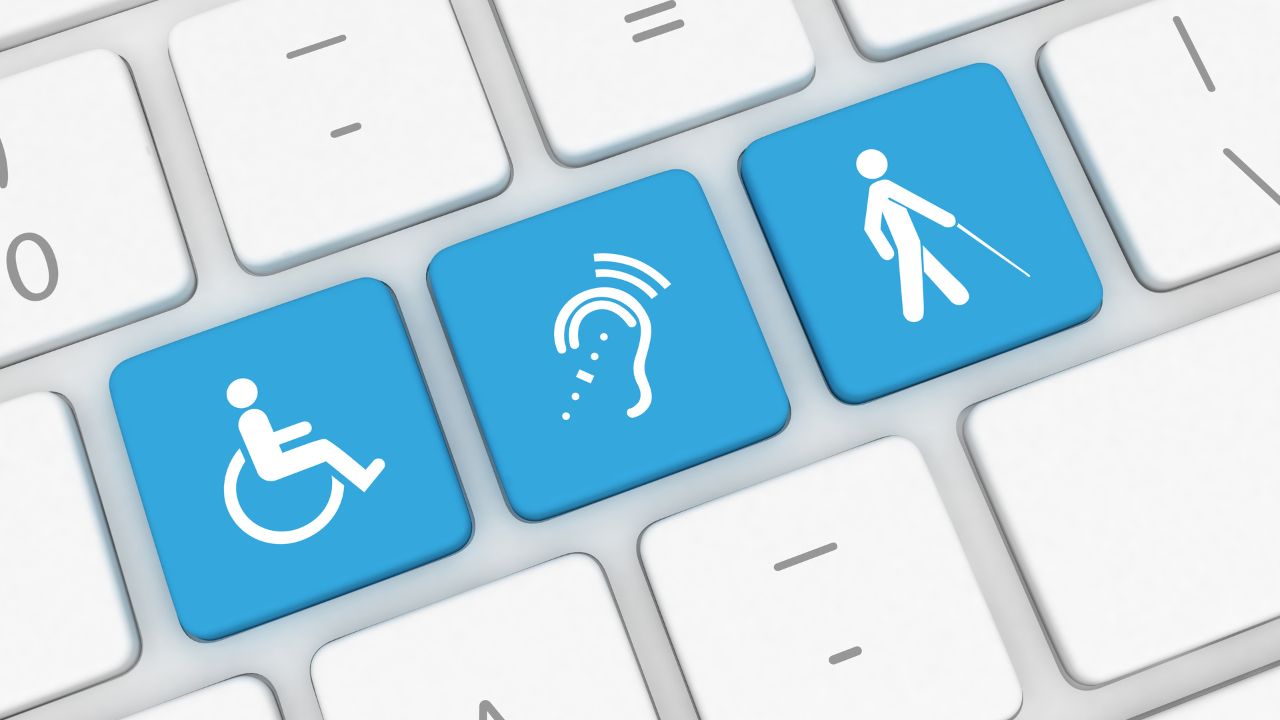Introduction
In today’s fast-paced and ever-evolving world, technology has become an indispensable part of our daily lives. It has transformed the way we communicate, work, learn, and engage with each other. One of the most notable benefits of these technological advancements is their ability to promote inclusivity and accessibility for people of all abilities, ages, and backgrounds. We will delve into how technology is breaking down barriers, creating equal opportunities, and fostering a more inclusive society.
Assistive Technologies for People with Disabilities
Hearing Impairments
Technology has made significant strides in helping people with hearing impairments communicate more effectively. For instance, hearing aids have evolved from bulky, analog devices to sleek, digital gadgets that can be customized to fit individual needs. Cochlear implants, on the other hand, allow people with profound hearing loss to perceive sounds by bypassing the damaged parts of the ear. Additionally, smartphone apps like Ava and Live Transcribe convert spoken language into text in real-time, making conversations more accessible.
Visual Impairments
For people with visual impairments, technology has opened up new possibilities in terms of navigation, information access, and communication. Screen readers like JAWS and VoiceOver convert text into speech, enabling users to access digital content. Braille displays provide tactile feedback, allowing users to read text on a computer or mobile device. Navigation apps like BlindSquare and Soundscape offer audio-based guidance to help users move around safely and independently.
Mobility Impairments
Technological advancements have revolutionized mobility for people with physical disabilities. Electric wheelchairs offer greater independence, while exoskeletons and robotic limbs provide assistance in performing everyday tasks. Smart home technology, such as voice-controlled lights and appliances, make living spaces more accessible. Moreover, eye-tracking systems and adaptive switches enable individuals with limited mobility to control computers and other devices.
Inclusive Education Through Technology
Adaptive Learning Platforms
Educational technology has come a long way in promoting inclusivity and catering to diverse learning needs. Adaptive learning platforms like DreamBox and Smart Sparrow provide personalized learning experiences based on individual students’ abilities, ensuring that no one is left behind. These platforms can identify areas of struggle and adjust the learning content accordingly, making education more accessible and engaging for all.
Accessible Educational Resources
Digital textbooks and multimedia resources have made learning more accessible for students with disabilities. Features like text-to-speech, adjustable font sizes, and alternative text descriptions for images allow learners with visual, hearing, or cognitive impairments to access educational content more easily. Moreover, open educational resources (OERs) provide free, high-quality learning materials that can be customized to cater to diverse needs.
Virtual Classrooms and Online Learning
The advent of online learning and virtual classrooms has made education more inclusive by removing geographical barriers and offering flexible schedules. Students with disabilities or those living in remote areas can now access quality education from the comfort of their homes. Additionally, online forums, video conferencing, and collaborative tools enable students to engage with their peers and instructors, fostering a more inclusive learning environment.
Promoting Social Inclusion Through Technology
Accessible Social Media Platforms
Social media has become an essential tool for communication, self-expression, and community building. Platforms like Facebook, Twitter, and Instagram have incorporated accessibility features such as image descriptions, closed captions, and keyboard navigation, ensuring that people with disabilities can participate in online conversations and share their perspectives.
Online Communities and Support Groups
The internet has made it possible for people with disabilities to connect with others who share similar experiences, fostering a sense of belonging and support. Online communities and support groups, such as Disability Visibility Project and The Mighty, offer safe spaces where individuals can share their stories, exchange information, and advocate for their rights.
Telemedicine and Remote Healthcare
Telemedicine and remote healthcare have become increasingly important in promoting social inclusion for individuals with disabilities or those living in rural areas. These technologies provide access to medical professionals, mental health services, and rehabilitation programs without the need for travel. As a result, patients can receive timely and appropriate care, improving their overall quality of life.
Fostering Inclusive Workplaces with Technology
Remote Work and Flexible Schedules
Remote work options and flexible schedules, facilitated by technology, are breaking down barriers for people with disabilities, caregivers, and individuals with chronic illnesses. By enabling employees to work from home, employers create an inclusive environment that accommodates diverse needs, promotes work-life balance, and reduces the challenges associated with commuting.
Assistive Technologies in the Workplace
The implementation of assistive technologies in the workplace has leveled the playing field for employees with disabilities. Examples include speech recognition software for individuals with mobility impairments, screen readers for those with visual impairments, and noise-canceling headphones for employees with sensory sensitivities. By providing necessary accommodations, employers foster an inclusive work culture that values diversity and equal opportunity.
Inclusive Hiring Practices and Job Platforms
Technological advancements have also paved the way for inclusive hiring practices and job platforms that cater to diverse needs. Job platforms like AbilityJobs and DisabledPerson.com connect job seekers with disabilities to employers who value inclusivity. These platforms help dismantle stereotypes and promote equal opportunities for all, regardless of their abilities.
Conclusion
Technology has played a significant role in promoting inclusivity and accessibility in various aspects of our lives. Assistive technologies, inclusive education, accessible social media platforms, and remote work options have broken down barriers for people with disabilities, allowing them to fully participate in society. As technology continues to evolve, it is imperative that we remain committed to fostering an inclusive world that embraces diversity and provides equal opportunities for all.
Crossword Puzzle in Context
All the words you need to solve this crossword puzzle are in the article above. Learn & Enjoy!
Keywords
- Assistive Technologies: Devices, systems, or tools that help individuals with disabilities perform tasks and increase their independence.
- Hearing Impairments: A partial or total inability to hear, which can affect one’s communication, learning, and daily life.
- Cochlear Implants: Electronic devices that bypass damaged parts of the ear and directly stimulate the auditory nerve, allowing people with severe hearing loss to perceive sounds.
- Visual Impairments: A decreased ability to see that can range from mild vision loss to complete blindness, affecting one’s ability to read, navigate, and access information.
- Screen Readers: Software programs that convert text into speech, enabling people with visual impairments to access digital content.
- Mobility Impairments: Limitations in a person’s ability to move or control their movements, which can be caused by various factors such as injury, disease, or congenital conditions.
- Adaptive Learning Platforms: Online learning systems that provide personalized educational experiences by adjusting content and instruction based on individual students’ abilities and progress.
- Accessible Educational Resources: Learning materials that have been designed or modified to accommodate the needs of individuals with disabilities, ensuring equal access to information and learning opportunities.
- Virtual Classrooms: Online learning environments that use video conferencing, chat tools, and multimedia resources to enable remote teaching and learning.
- Social Inclusion: The process of ensuring that all individuals, regardless of their abilities, backgrounds, or circumstances, can fully participate in society and enjoy equal opportunities.
- Accessible Social Media Platforms: Online platforms that incorporate features and tools designed to accommodate users with disabilities, allowing them to communicate, share content, and engage with others.
- Telemedicine: The use of technology to provide remote healthcare services, allowing patients to access medical care without physically visiting a healthcare facility.
- Remote Work: A work arrangement that allows employees to perform their job duties from a location other than the traditional office setting, typically from home.
- Flexible Schedules: Work schedules that provide employees with the freedom to adjust their working hours and accommodate their personal needs and commitments.
- Inclusive Workplaces: Work environments that embrace diversity and provide equal opportunities for employees of all abilities, backgrounds, and experiences.
- Speech Recognition Software: Programs that convert spoken language into text, allowing individuals with mobility impairments to control computers and devices using voice commands.
- Noise-canceling Headphones: Headphones that use active noise control technology to reduce unwanted ambient sounds, making it easier for individuals with sensory sensitivities to concentrate in noisy environments.
- Inclusive Hiring Practices: Recruitment strategies that promote diversity and ensure equal opportunities for candidates of all abilities, experiences, and backgrounds.
- Job Platforms: Online websites or applications that connect job seekers with employers, facilitating the job search and application process.
- Open Educational Resources (OERs): Free, high-quality learning materials that can be accessed, customized, and shared by educators and learners, promoting equal access to education and knowledge.










0 Comments